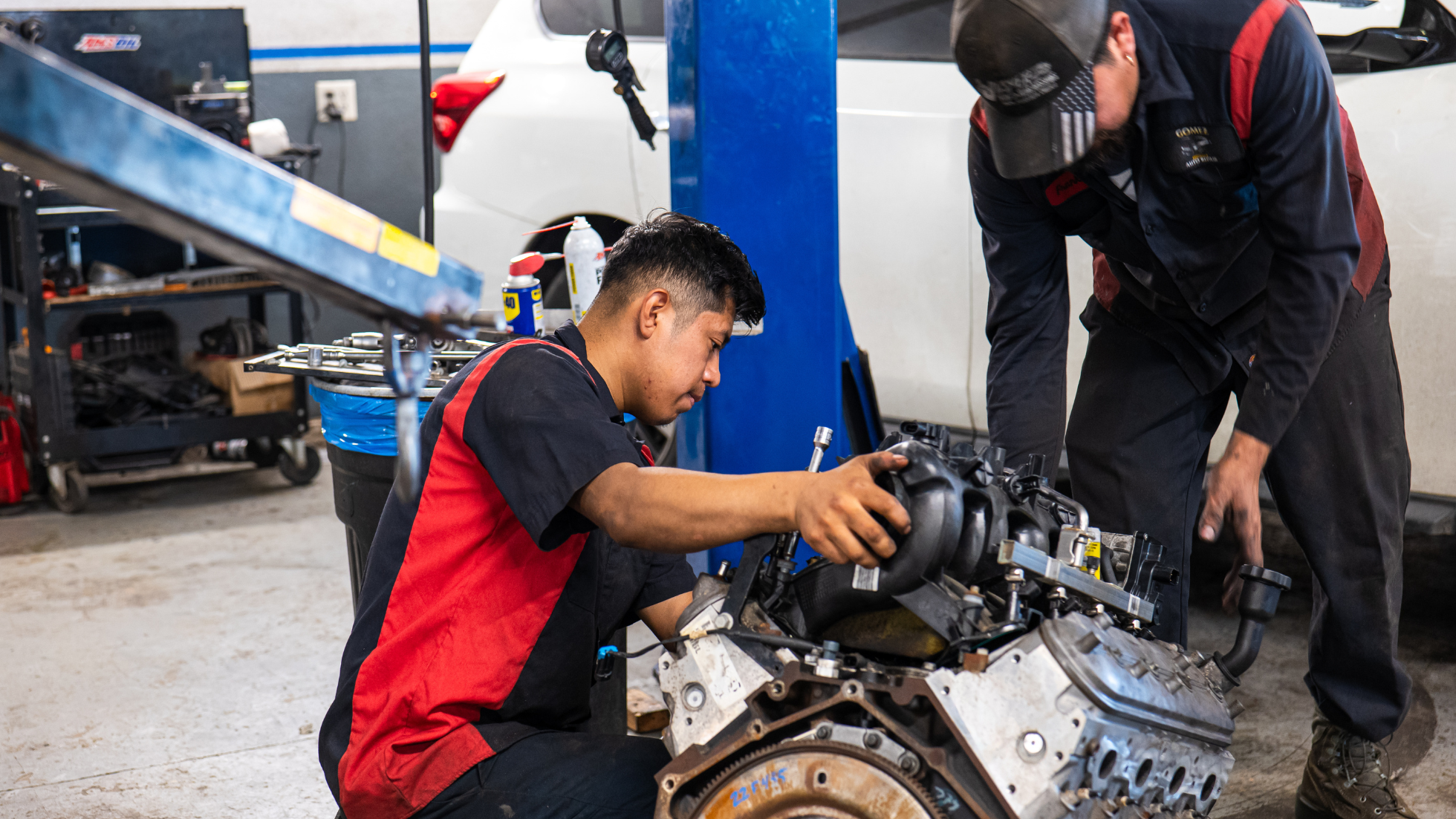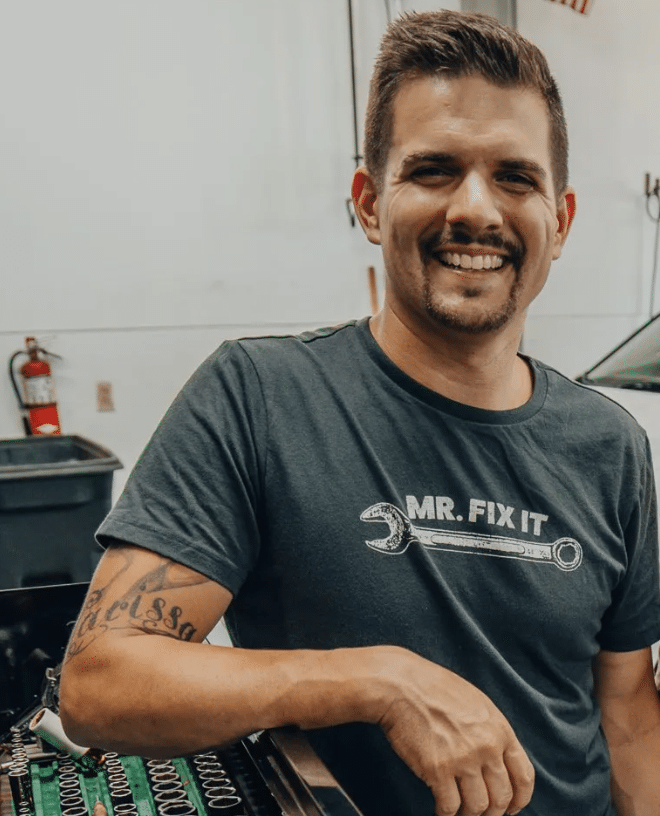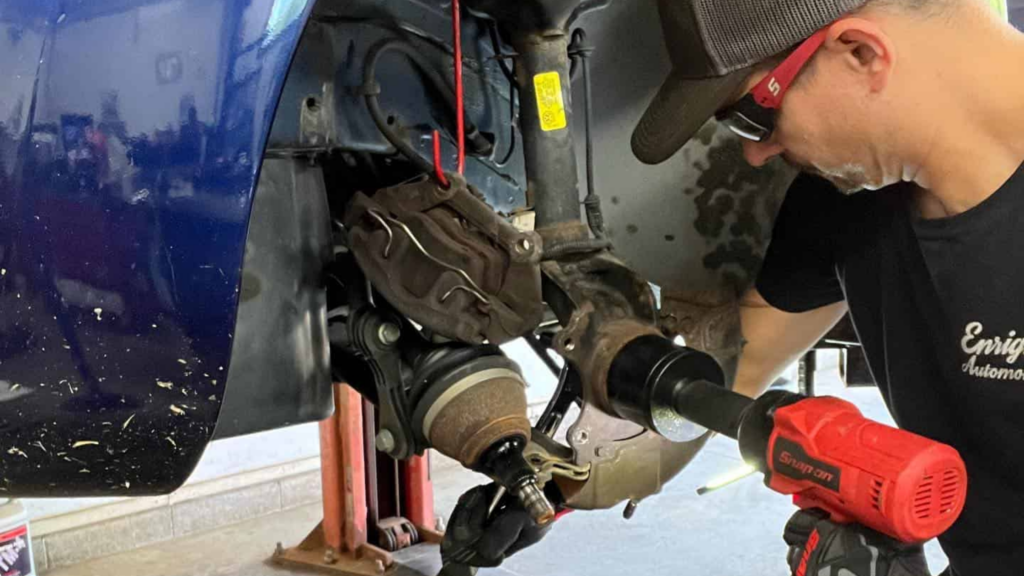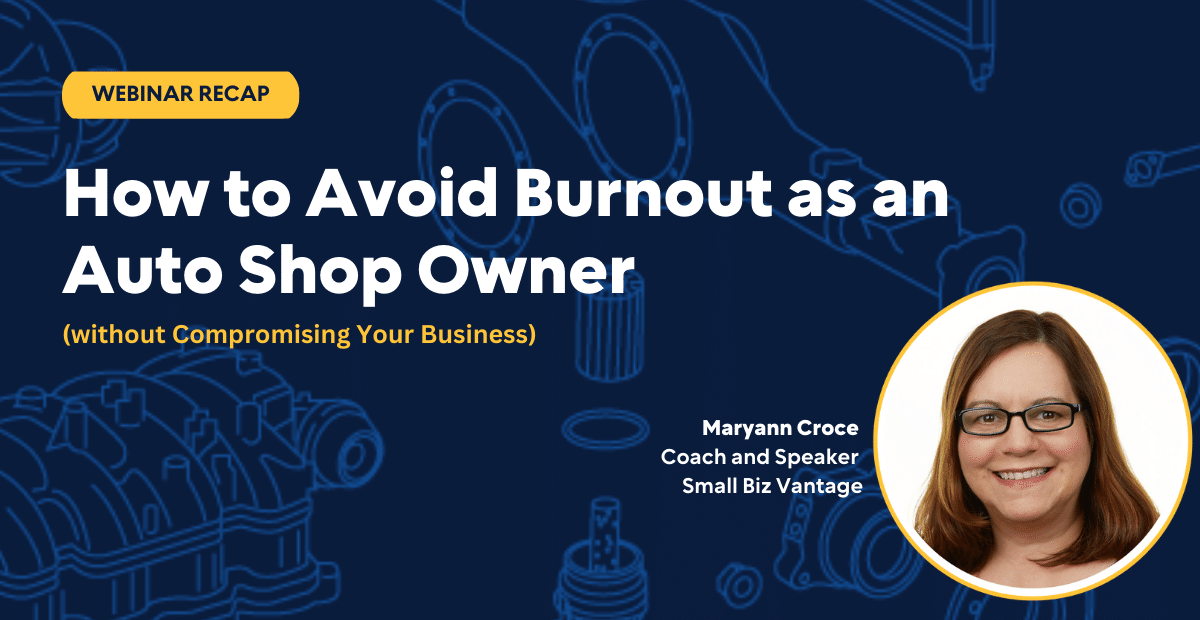

We spent time chatting with Chris Enright, owner of Enright Automotive, to learn about his experience starting his own auto repair shop and the challenges he faced. If you missed it, you can learn more about Chris and find a summary of Chris’ top challenges and setbacks, as well as tips for aspiring or new shop owners — read the blog post.
This week, we invited Chris to join PartsTech for a webinar to dive deeper into his experiences of starting his own shop. Below, you will find a summary of some of the top insights shared by Chris. We highly encourage you to watch the on-demand recording of the webinar.
The biggest challenge: Client acquisition
The role of friends and family (word-of-mouth)
“I did not anticipate how hard it was going to be to get clients,” Chris revealed. “The hardest thing in starting a business is getting clients… you have to have clientele to run your business and grow it, and you have to continue to grow that clientele.”
At the start, Chris relied entirely on word-of-mouth marketing, spending zero dollars on advertising. “I was solely reliant on that word of mouth… the only people I did business with were family and friends,” he shared. He made sure everyone in his immediate circle knew he was looking for new clients and asked them to spread the word.
“I talked to owners, and they don’t tell their friends and family about their shop, and I tell them that those are the most important people because they’re going to be your greatest advocates,” Chris emphasized.
Leveraging social media and beyond
Chris learned quickly that while word-of-mouth is the best type of client referral, it can only take you so far. “Eventually, you will have to market,” he added.
In a small town of 400 people, word-of-mouth was crucial for Chris. However, he knew he needed to expand his reach beyond his immediate circle. Chris emphasizes that shops must figure out what type of marketing works best for them because not all tactics that work for one shop will work for others. His advice to new shop owners is straightforward: “Start with word-of-mouth, but don’t hesitate to explore social media and other marketing channels to build a broader client base.”
Reflecting on his own experience, Chris noted, “Had I known what I know now, I would have been doing a lot more social media sooner, without a doubt.” For Chris, platforms like Instagram and Facebook have been the most effective for him in communicating his shop’s specialization and attracting new clients. Additionally, Chris eventually hired Shop Marketing Pros — a specialized marketing company focused exclusively on automotive repair shops to help him with additional types of marketing. He still uses Shop Marketing Pros today and finds incredible value in their services.
Operational challenges and strategic changes
Managing inventory
Managing inventory was a significant challenge for Chris, especially early on. “I thought I needed a bunch of inventory, but that wasn’t the case,” he admitted. With multiple parts stores located just 15 minutes away from his shop, he quickly realized that keeping a large stock wasn’t necessary. “Most of my suppliers can get parts to me within an hour or two,” Chris explained, which allows him to avoid tying up capital in unused inventory.
Instead of stocking everything, Chris learned to focus on fast-moving items, like common oil filters or cabin air filters for the Honda and Acura vehicles he specializes in. “You don’t want to tie up a ton of your money in inventory that you’re not doing anything with,” he advised, noting that those funds are better invested back into growing the business.
More cars doesn’t mean more money
Chris admitted he fell into a common misconception early in his shop ownership journey — believing that a large volume of cars and a constant backlog of vehicles waiting to be serviced was a sign of success. “I thought the only way to make more money was to fix more cars,” he shared. “I was working 12 to 14 hours a day, seven days a week, servicing all these cars, but when I looked at the numbers, I wasn’t making any profit.”
However, he soon realized this approach only led to massive inefficiencies. “You want to be booked out 2-3 days, not 2-3 weeks. People don’t want to wait that long,” Chris explained. Once he shifted his focus to managing his time better and optimizing his workflow, he went from handling 80 repair orders a month to just 40 or 50 — while actually making more money (see below to read Chris’ thoughts on charging what you’re worth). This adjustment allowed him to provide better service and focus on quality over quantity.
The importance of thorough inspections
Another critical factor in Chris’s success has been his commitment to thorough vehicle inspections. “Many shops do not do through inspections, but I make it a huge priority. It’s my job to inform the customer so they can make an informed decision,” he emphasized. Rather than simply fixing what the customer asks for, Chris ensures every vehicle is fully inspected to identify any additional issues or potential liabilities.
He stressed that this approach isn’t just about upselling — it’s about transparency and professionalism. “We owe it to the customer to let them know what their vehicle does or does not need,” Chris said. He also pointed out that thorough inspections protect the shop from potential liabilities: “If something goes wrong with the car after it leaves your shop, you’re still held responsible as the last professional to have touched it.”
Chris believes that the level of education and transparency he is able to provide to his customers by doing thorough inspections was a major contributing factor to doubling his revenue from year one to year three.
Time management and the importance of software tools
The importance of software tools and taking the time to learn them
Chris strongly recommends using a robust shop management system (SMS) from day one, stating, “It makes the world of a difference… You’ll make up the money you’re spending just in time alone, not including all of the other benefits.”
He emphasized the value of investing in the right tools and technology from the very beginning, especially for saving time and improving efficiency. Even as a one-person shop, he finds it crucial to use an SMS and other tools to streamline operations. “I’m easily spending over $1,000 a month on technology,” Chris shared, referring to his SMS, CRM tools, repair information services, and more. However, he views this expense as an essential investment rather than a cost.
“After trying out a couple of basic systems, I finally switched to Tekmetric, and it paid for itself within the first month. You will make up the money you are spending just in time alone,” Chris explained, highlighting how his SMS integrates everything — from online scheduling and parts ordering to customer management and point-of-sale systems — into one seamless platform. “Instead of going here, there, and everywhere, it’s all done in one place,” he added. This integration saves countless hours that would otherwise be wasted on administrative tasks.
A change in mindset on the cost of tools and software
Reflecting on his initial hesitation to invest in a quality SMS, Chris stated, “Stop asking how much stuff is going to cost. Instead, ask how much it’s going to help you or how much it’s going to make you.” His advice is clear: invest in technology that enhances your workflow and enables growth, even if you’re running a small shop, and take the time to learn it inside and out.
Knowing when to expand: The right time to hire
Chris’s decision to hire his first employee came after realizing he was stretched too thin managing all aspects of the business on his own. “I should have hired her probably a year and a month ago,” he confessed. Initially, he had become too comfortable managing everything himself, which held back his growth.
“I was constantly told to hire a tech, hire a tech, hire a tech,” Chris recalled, acknowledging the pressure many shop owners face to expand their team with another technician. However, he chose a different path. “I decided to hire an assistant instead — someone who could handle the administrative tasks that were taking up so much of my time,” he explained. This strategic decision allowed him to focus on the areas where his skills were most needed while freeing up his schedule for business development.
Chris recognized that if he had a larger shop, hiring another technician might have made more sense. However, given his unique situation and the nature of his current business, bringing in administrative support was the right move. His key takeaway: Hire strategically and be conscious of when comfort turns into complacency. Don’t just follow the conventional advice — consider what makes the most sense for your specific business needs.
Chris’ top advice for shop owners
Charge what you’re worth!
When asked about his most important advice for other shop owners, Chris was clear: “Charge what you’re worth.” He pointed out that many shops undervalue their services, trying to compete with the lowest prices in their area. “Most shops are subsidizing their costs to try to keep up with another shop down the street because that shop is doing $69 brake pad slaps,” Chris noted. He encourages shops to stop comparing their prices to other shops.
He also challenged the mindset that higher prices won’t work in certain areas. “I have shops all around me charging anywhere from $60 to $80 an hour and letting customers bring their own parts. I charge $150 an hour for labor and make 52% or more on parts. When people tell me ‘that won’t work in my area,’ I tell them that’s a lie they tell themselves,” Chris emphasized. His message is clear: Don’t undervalue your services, and don’t convince yourself that you can’t charge more. Confidence in your worth is key to running a profitable shop.
Doubling revenue with strategic changes
By implementing a few changes — such as optimizing workflow, pricing services appropriately, implementing a shop management system, and conducting thorough inspections — Chris achieved significant growth for his business. “We doubled our gross revenue from year one to year three,” Chris explained, even while reducing his monthly repair orders from 80 to around 40-50.
Chris remains committed to learning and growth, continuously seeking ways to enhance his shop’s performance and encourage all other shop owners to do the same.
Hear more insights from Chris:
Related blog post:
(Part 1) Starting an auto repair shop: The good, bad, and unexpected



